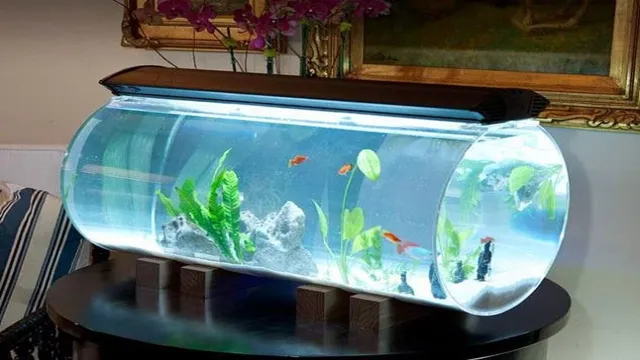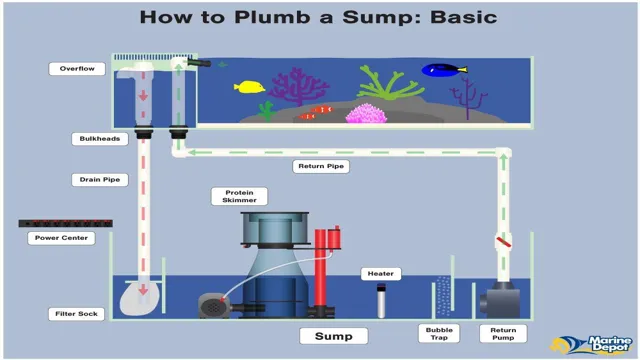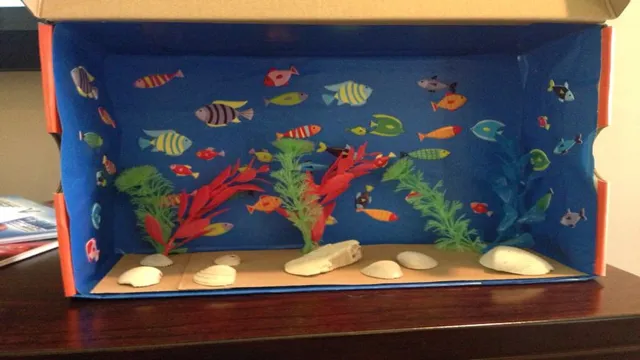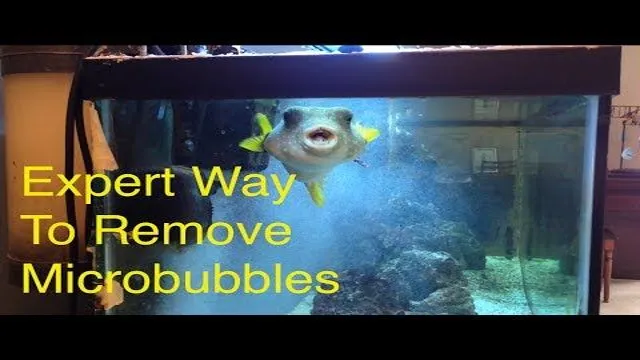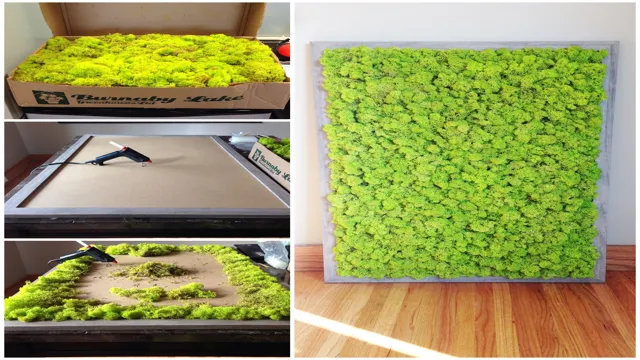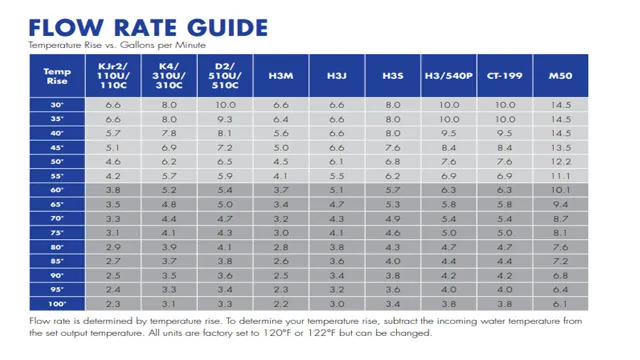Have you ever gazed into a fish tank and wondered how you could improve the water flow? Creating a water current in your aquarium can provide several benefits to your aquatic creatures. For starters, it recreates a natural undercurrent found in rivers, lakes, and oceans, which fish need to simulate their natural habitat. Additionally, a flowing water current helps distribute heat, oxygenate the water, remove debris, and provides additional exercise for your fish.
To create a water current, you can use various methods, including powerheads, wave makers, air stones or bubble wands, and canister filters. Each of these tools can be used separately or in combination to generate the perfect flow rate, direction, and pattern, depending on the type of fish and plants in your aquarium. For instance, a gentle flow rate is ideal for smaller fish species, while larger fish need stronger currents.
One of the most critical factors to keep in mind when creating a water current is safety. Ensure that you place all equipment correctly and securely to avoid any accidents or damage. Also, monitor the flow rate carefully to prevent any strain on your fish, plants, or equipment.
In conclusion, if you’re looking to elevate your aquarium’s appearance and the health of your aquatic pets, creating a water current is a must. With the right tools, safety, and monitoring guidelines, you can tailor the water flow to your aquarium’s specific needs and enjoy watching your fish thrive in their new, comfortable, and natural habitat.
Why Water Current is Important
Creating water current in your aquarium is essential for maintaining a healthy and thriving environment for your aquatic pets. A strong water current not only helps to oxygenate the water, but it also prevents stagnant areas where debris and harmful bacteria can accumulate. There are several ways to create current in your aquarium, including adding a powerhead or water pump, positioning filtration systems to create a flow of water, or using an air stone to agitate the surface of the water.
When creating current in your aquarium, it is important to keep the needs of your fish and plants in mind and to adjust the strength of the current accordingly. By providing a steady and consistent flow of water, you can help mimic the natural environment of your aquatic pets and promote their overall health and wellbeing. So be sure to incorporate ways to create current in your aquarium to provide the best possible environment for your underwater friends.
Benefits of Water Current
Water current is an essential component of our planet’s water cycle. It plays a massive role in creating and maintaining aquatic ecosystems by controlling the movement of nutrients, sediments, and organisms throughout the waters. The movement of water current, driven by factors like temperature and salinity, also supports ocean circulation, which in turn regulates the Earth’s climate by transporting heat and moisture all around the world.
Moreover, water current can be harnessed to generate clean, renewable energy through the use of hydropower turbines installed in tidal or river currents. By using water current to generate electricity, we can reduce our reliance on fossil fuels and contribute to a more sustainable future. Overall, water current plays a critical role in the health of our oceans, the stability of our climate, and the development of clean energy sources.
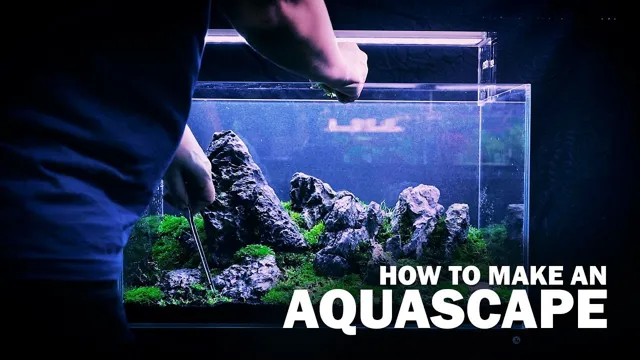
Effects of No Water Current
Water current is essential for a healthy aquatic ecosystem. Without it, there can be disastrous effects. For example, stagnant water that lacks any motion allows debris and pollutants to accumulate, leading to a chemical imbalance and creating a breeding ground for dangerous bacteria.
Moreover, water current is essential for the survival of aquatic organisms, including plants and animals. It plays a vital role in their reproduction, feeding, and respiration. For instance, fish require water movement to oxygenate their gills, which they need to breathe.
Similarly, plants such as algae rely on water currents to distribute nutrients, enabling them to grow and thrive. Thus, the importance of water current for aquatic life cannot be overstated. It is crucial for maintaining a healthy ecosystem and ensuring the survival of aquatic fauna and flora. (See Also: How to Make PVC Aquarium Decorations: Step-by-Step Guide for Beginners)
Ways to Create Water Current
Creating water current in an aquarium is essential for the health and well-being of your underwater pets. There are numerous techniques that you can use to achieve this, including using a powerhead, wave maker, or air pump with a bubbler. A powerhead is an excellent option for creating a strong and consistent current in your aquarium, which is vital for certain fish species, while a wave maker is ideal for creating a more natural and irregular flow, similar to the ocean.
An air pump with a bubbler can also help to create gentle water movement, which can be beneficial for plant growth or smaller fish. Regardless of which method you choose, it is essential to ensure that the current is not too strong or too weak, as either of these scenarios can cause harm to your aquarium inhabitants. With a little trial and error, you can find the perfect balance to create a healthy and thriving aquatic environment in your home.
Use of Filter System
Creating a strong water current in your aquarium not only adds a beautiful aesthetic appeal but is also essential for the health and well-being of your aquatic pets. One of the ways to achieve this is by using a filter system. Filters work by drawing water through the intake tube, which is then processed by the filter media, removing any debris or harmful chemicals.
The output of this process is a steady flow of clean water, which can create a gentle or strong water current, depending on the strength of the filter. You can adjust the flow rate by using the valve on the filter or attaching a nozzle to the output. This technique also has the added bonus of reducing the stagnant areas of the aquarium, which can potentially lead to the growth of harmful bacteria.
Overall, using a filter system is an efficient and convenient way to create a healthy and livable environment for your aquatic pets.
Adding Powerhead/Wave Maker
Adding a powerhead or wave maker to your aquarium is an excellent way to create water currents that mimic those found in a natural marine environment. There are different types of powerheads or wave makers available on the market, each with its unique features and advantages. For instance, some come with an adjustable flow rate while others have various modes that can simulate different wave patterns.
The good thing about using powerheads or wave makers is that they improve the water quality in your aquarium by promoting better oxygenation and circulation, which also helps in maintaining the health and wellbeing of your fish and corals. With the right powerhead or wave maker installed, you can also create different water currents in your aquarium, such as circular, unidirectional, or random flows, which can make your aquarium more visually appealing and exciting to watch. Overall, powerheads and wave makers are must-have accessories for any saltwater aquarium enthusiast who wants to create a healthier and more dynamic environment for their marine pets.
Placing Air Stones/Decorations
If you’re looking for ways to create water current in your fish tank, there are a few things you can do. One option is to place air stones or other decorations in the tank that will create bubbles and help move the water around. Air stones come in a variety of shapes and sizes, so it’s easy to find one that will fit your tank and aesthetic preferences.
Additionally, larger decorations like rocks or wood can create currents as the water flows around them. This can be especially beneficial for fish that prefer swift-moving water or for tanks that need extra filtration. As always, it’s important to monitor the current in your tank and adjust as needed to ensure your fish are happy and healthy.
By incorporating decorations and air stones into your tank setup, you can create a dynamic and visually interesting underwater environment that both you and your fish will enjoy.
Factors to Consider When Creating Water Current
Creating water current in an aquarium is crucial for the health of your aquatic pets. When setting up the current, it’s essential to consider the factors that will help keep the water clean and regulate the temperature. One critical factor is the strength of the flow. (See Also: How to Get Aquarium in Subnautica Zero: A Step-by-Step Guide for Beginners)
You want the water to be moving enough to promote good circulation, but not too strong to harm the aquatic life. Another essential factor is the type of filtration system you use. A good filtration system will keep the water clean and rid of any harmful particles that may cause fish to fall sick or die.
Additionally, the positioning of the water outflow must also be considered, as it can affect the overall temperature of the water and the way the current flows. In conclusion, creating water current in an aquarium is a crucial task that requires careful thought and attention to detail. A well-regulated current will help maintain a healthy and safe environment for your aquatic pets.
Size of Aquarium
When it comes to creating water current in your aquarium, the size of the tank is a significant factor to consider. The larger the aquarium, the more important it is to have proper water movement to ensure all areas of the tank are getting adequate filtration and oxygenation. A small aquarium will require less current, and a gentle water flow will suffice.
But in a larger tank, you will want to use a more powerful water pump to create a stronger water current. Keep in mind that the goal of creating water movement is not to create chaos in your tank, but rather to mimic the natural flow of water in a fish’s natural environment. By considering the size of your aquarium, you can choose the right size and strength of equipment needed to create the optimal water current for your fish.
Fish/Shrimp Species
When it comes to creating water currents in a fish or shrimp tank, several factors should be considered to ensure that the aquatic species thrives. The first thing you should consider is the type of fish or shrimp species you have. Some species thrive in still water, while others prefer a strong current.
For example, bettas enjoy calm waters, while some varieties of tetras flourish in a stronger current. Therefore, before creating your water current, it’s essential to research the specific needs of your aquatic pets. You should also consider the size and shape of your tank, the filter’s flow rate, and the type of decor and plants you have in your tank.
These factors also play significant roles in determining the water current’s strength and direction. By taking these factors into consideration, you can create optimal water current conditions for your fish or shrimp, promoting healthy growth and well-being.
Maintenance of Water Current System
Creating a water current in an aquarium is essential for maintaining a healthy and thriving aquatic environment. There are different ways to create water current in an aquarium, from using powerheads to air-driven systems or wave-makers. Before setting up a water current system, it’s important to consider the size and shape of the tank, the type of aquatic creatures living in it, and the intensity and direction of the flow.
When the water current is too strong, it can stress or harm the fish, corals, or inverts, while a stagnant water environment may lead to the accumulation of debris, bacteria, and algae. Regular maintenance of the water current system involves cleaning the filters, checking the flow rate, and adjusting the direction and intensity of the water flow to prevent dead spots or too much turbulence. By ensuring proper water current in an aquarium, you provide your aquatic pets with a healthy and stimulating living environment.
Conclusion
Creating a current in your aquarium is a fin-tastic way to keep your fish happy and healthy! By strategically placing your filter, air pump, and powerheads, you can simulate the natural flow of water in the ocean and keep debris and waste moving towards your filtration system. Just like a school of fish working together to create a strong current, with a little planning and effort, you too can enjoy the benefits of a well-circulated aquarium. So don’t let the challenges of creating a current leave you feeling crabby – dive in and get swimming in the right direction!” (See Also: How to Add Aquarium Salt in Freshwater Tank to Treat Ich: A Step-by-Step Guide)
FAQs
What is the importance of creating current in an aquarium?
Creating current in an aquarium provides several benefits, such as proper oxygenation and filtration, prevention of stagnant water, and stimulation of fish and plant growth.
How can I create current in my aquarium?
You can create current in your aquarium by using a water pump, a powerhead, or an air stone. You can also adjust the placement and flow rate of these equipment to control the current.
How much current should I create in my aquarium?
The amount of current in your aquarium depends on the size and the type of fish and plants you have. In general, a turnover rate of 10 times the tank volume is recommended for fish-only setups. However, reef tanks may require higher flow rates.
What are the common problems associated with excessive current in an aquarium?
Excessive current in an aquarium can cause stress and injury to fish, disturb sedentary or delicate species, and create dead spots or areas with low oxygen levels. It can also lead to equipment failure or excessive energy consumption.
How can I reduce the flow rate in my aquarium?
You can reduce the flow rate in your aquarium by using a flow restrictor, increasing the diameter of the tubing or plumbing, changing the impeller or propeller of your equipment, or adding diffusers or baffles to deflect the water flow.
How can I monitor the current in my aquarium?
You can monitor the current in your aquarium by using a flow meter, a current meter, or a test kit for dissolved oxygen, pH, or other parameters affected by water circulation. You can also observe the behavior and the health of your fish and plants to assess the current.
How often should I adjust or clean my equipment for creating current?
You should regularly adjust or clean your equipment for creating current to prevent clogging, wear and tear, or malfunction. The frequency of maintenance depends on the type and the condition of your equipment, but you should aim for at least monthly inspection and cleaning.

